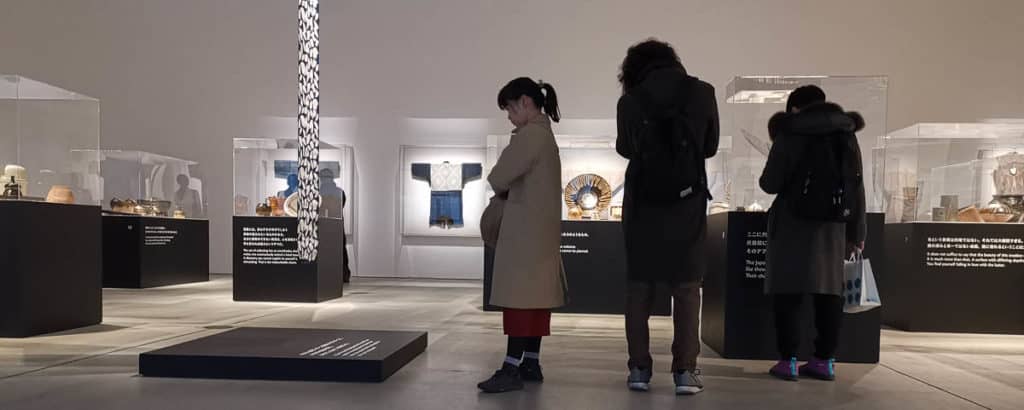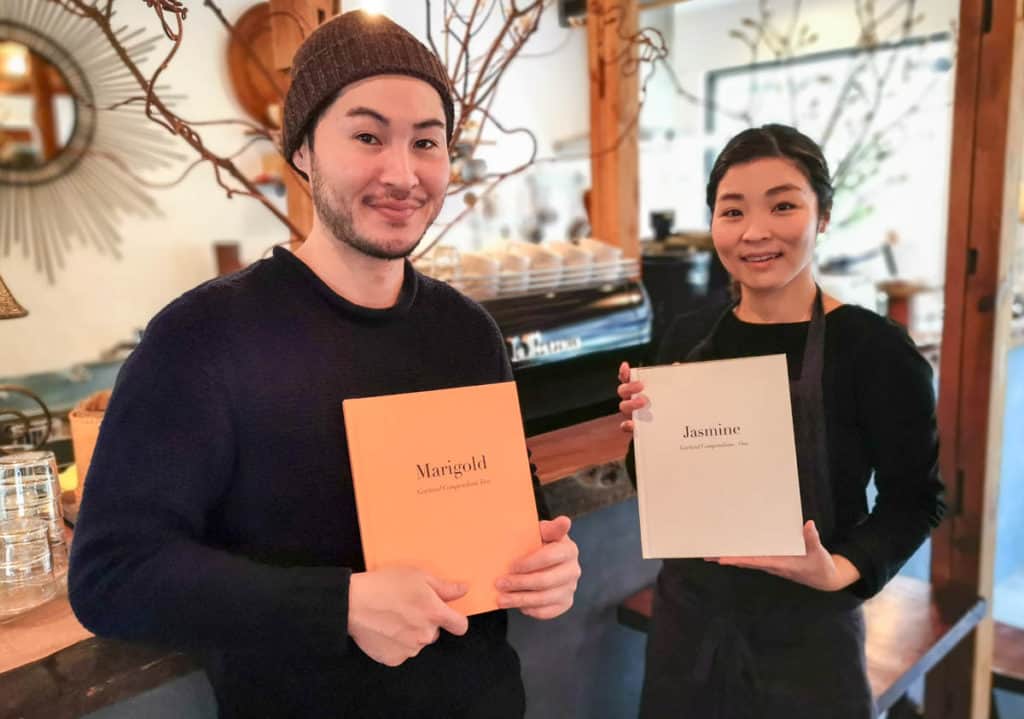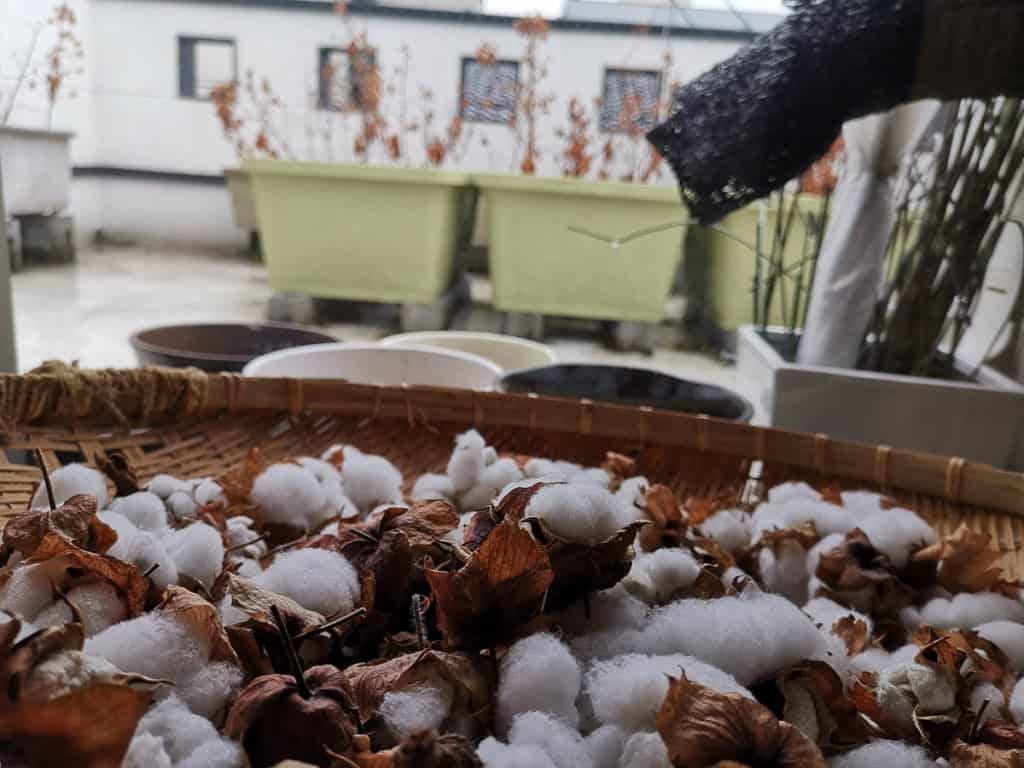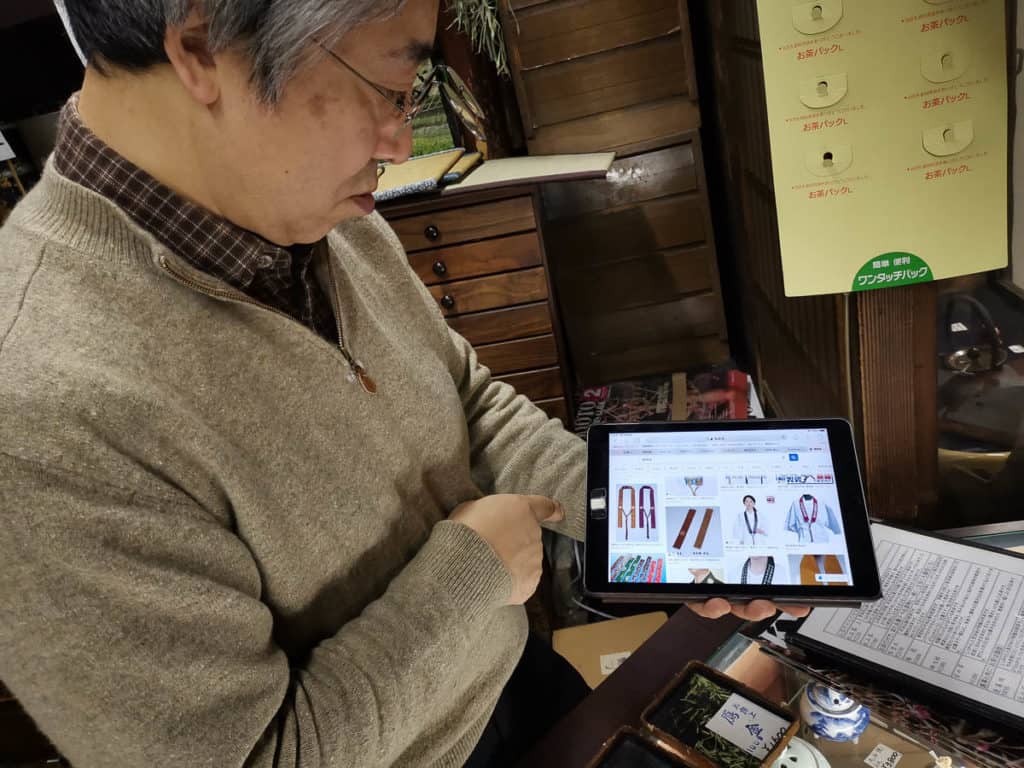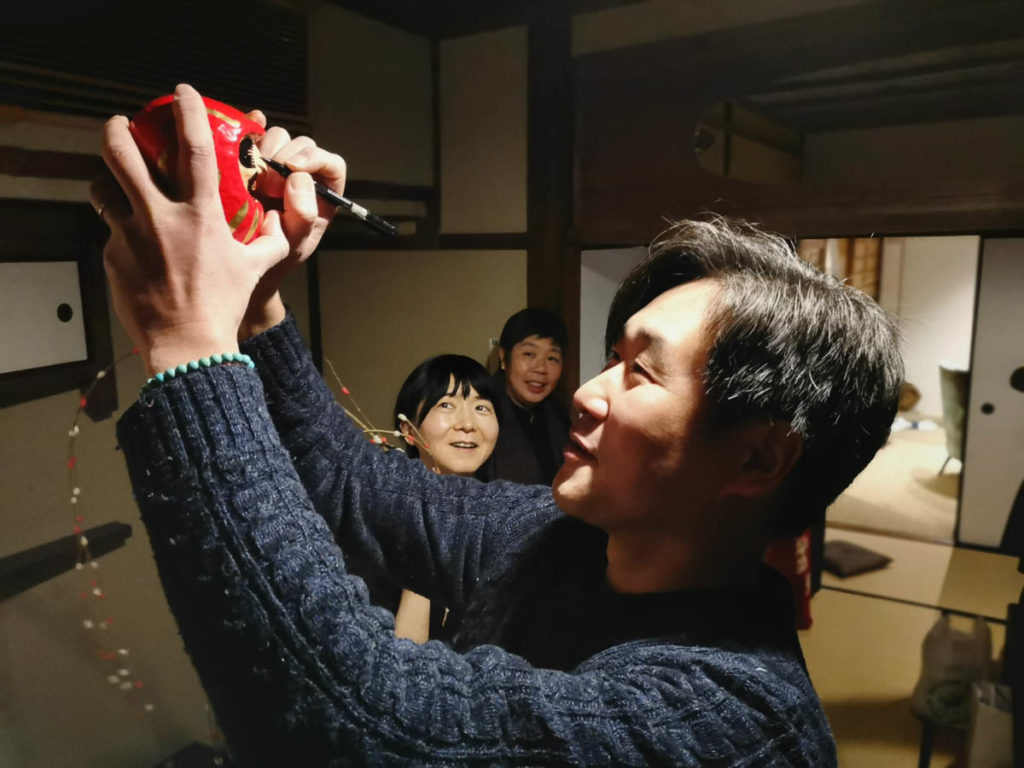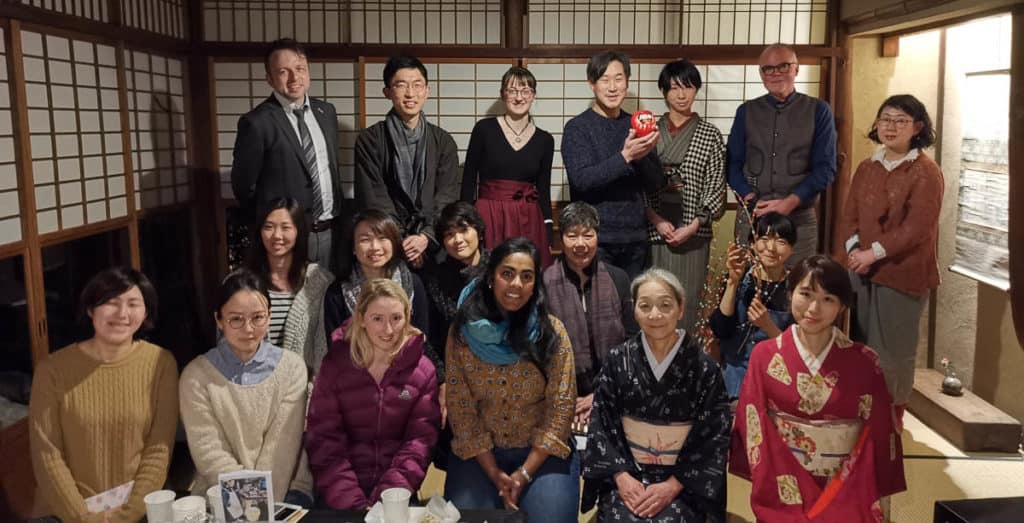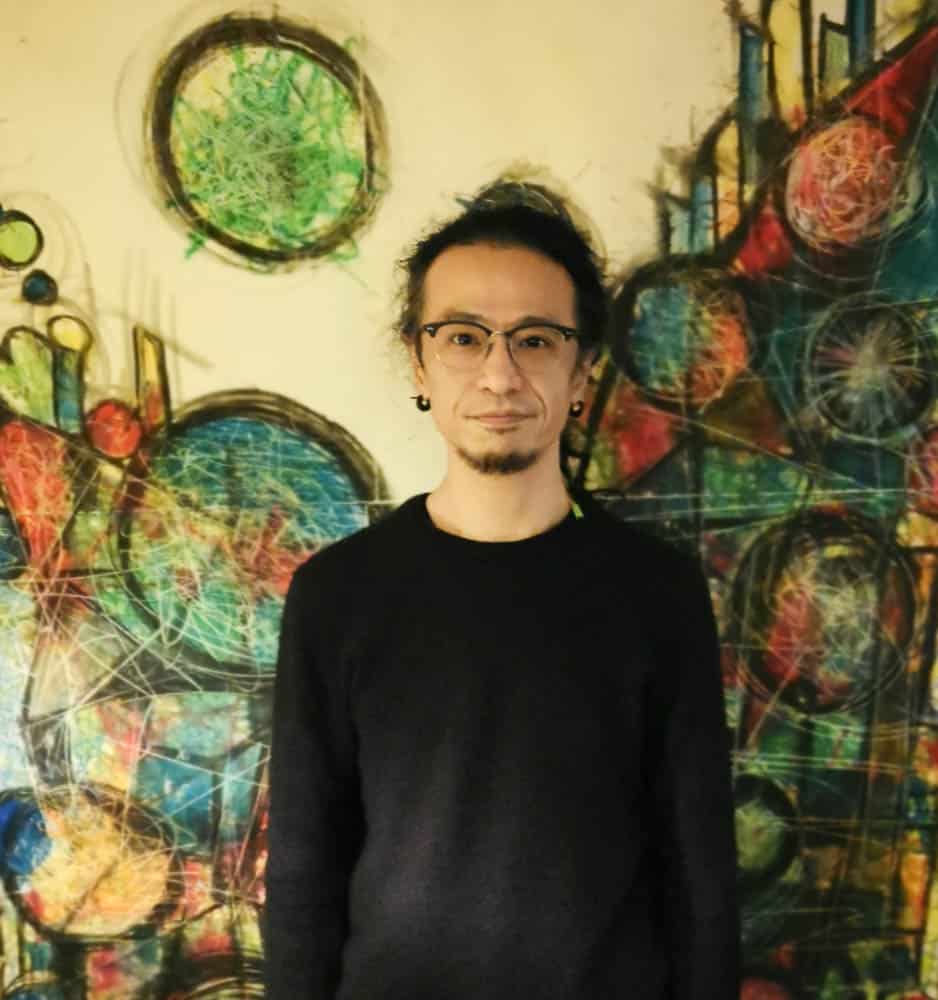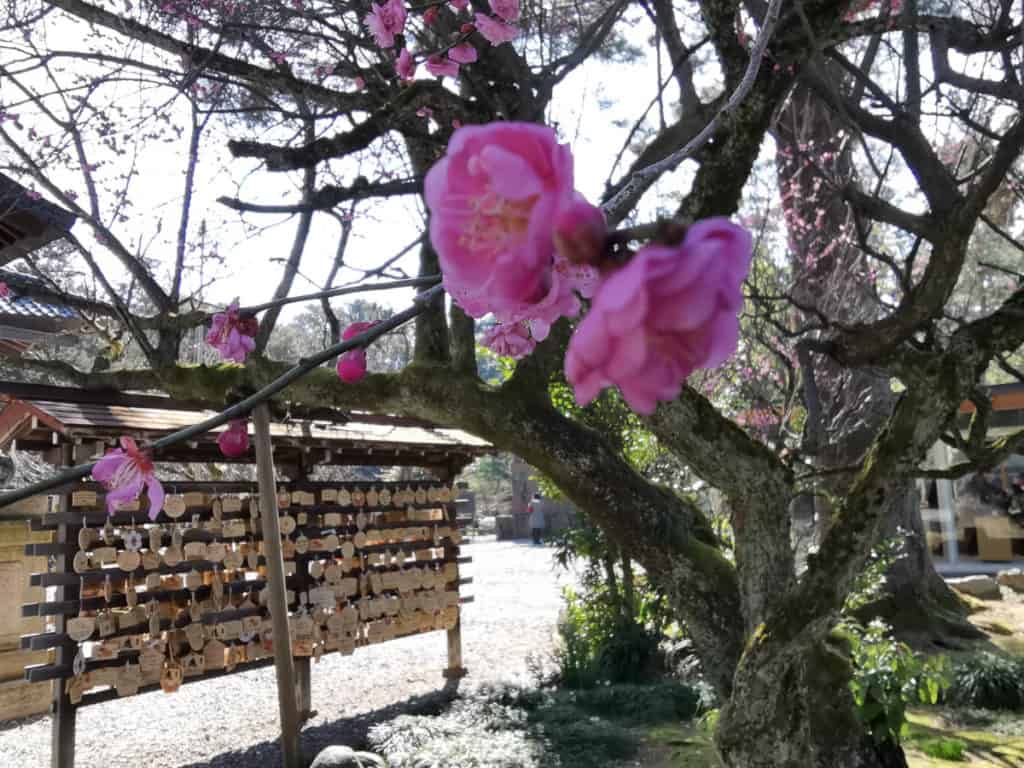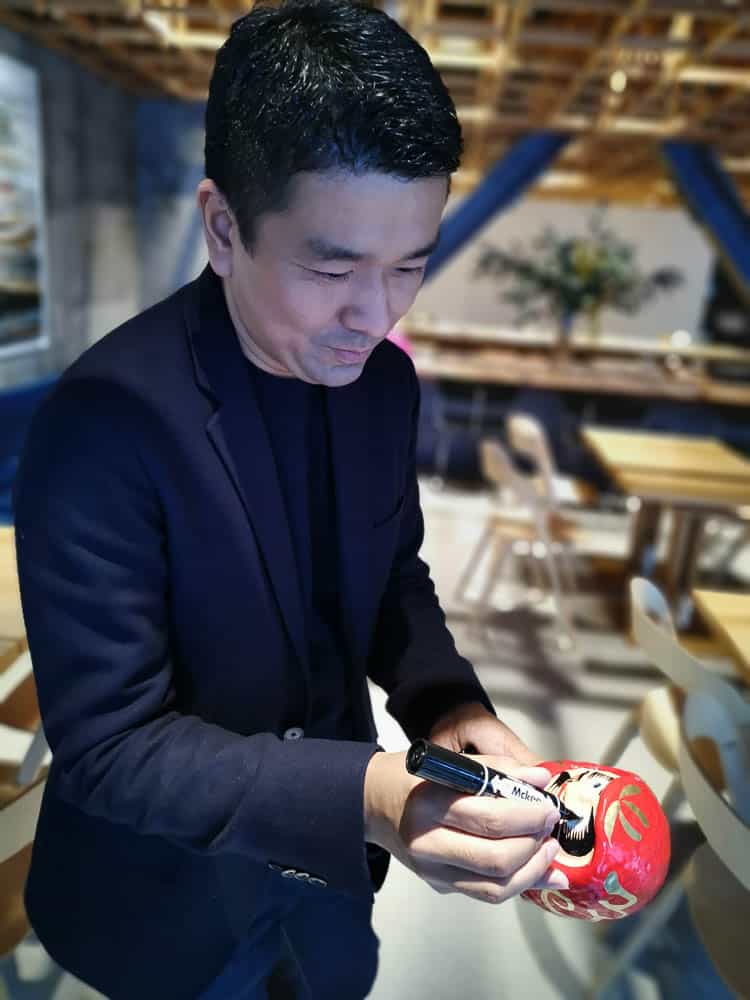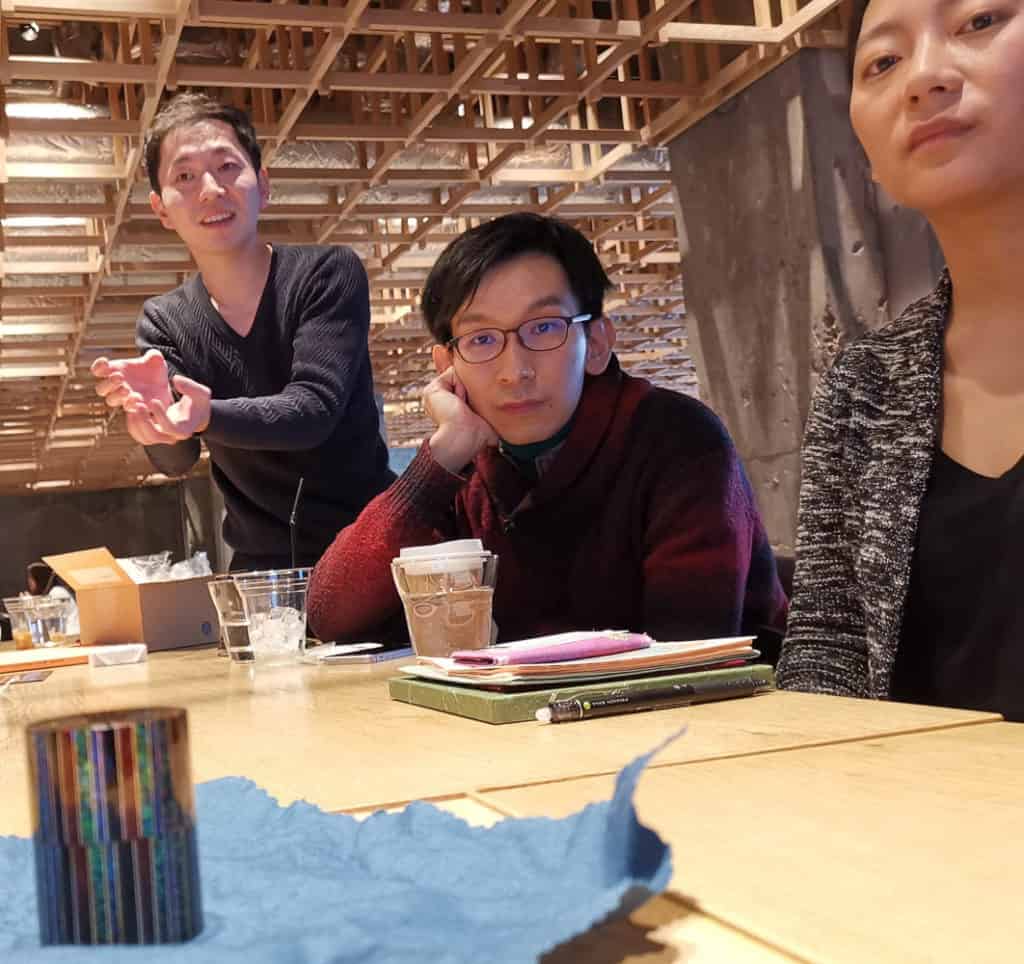- A shimenawe to welcome guests.
- The exhibition “Mingei – Another kind of art” at 21 Design Sight gallery Tokyo introduced this movement to a new generation who seemed engrossed in the works and also the innovative use of texts, which emphasises the “charm” and “fun” of mingei.
- Takumi and Akiyo proudly show their copies of Garland compendia for guests of their Nem cafe in Tokyo. We left with the line: “Reading a story is like watering a flower”.
- Kanako Tanaka-san from the kimono studio Ochi Cochiya in Kyoto that practices motannai enivoronmental ethics, growing cotton for weaving from cotton waste on their balcony.
- Cotton on the balcony
- Tea merchant Nagahiro Yasumori leading us to the Buddhist collar as a potential Kyoto garland
- The seller of the Buddhist collars showing how their are worn.
- Eventually we find mochibana, willow branches decorated with rice paste for new year intimations of spring. These were shop decorations not for sale, so they offered them to Garland for free. A prize for Miki Hanafusa.
- Tasty tofu donuts as snacks for our guests.
- Director of Design Week Kyoto Isao Kitabayashi putting the first eye in the daruma for Kyoto.
- The end of a most interesting discussion in the atmospheric machiya, Kyoto.
- Hotel Kanra Kyoto has its own kintsugi service for guests, in supporting the craft experience. Staff were seen at reception teaching children origami cranes.
- Masato Ucon from Mole cafe will be hosting our Marigold edition in Kyoto. As an experimental musician, he has also been running this cafe for 23 years. It embodies the kissaten style of Japanese cafe with a modern twist.
- Kanazawa offered the first plum blossoms, to be found at Oyama Jinja Shrine
- Kentaro Takayama-san completing the second eye of the daruma.
- Gazing at the intricate lacquer work of Ikeda Teramusa-san.
We offer some brief glimpses of the launches of our 生きている工芸 Ikiteiru kōgei (Living craft) issue across Japan. This was important both for exploring the local response to our issue and raising interest in our future journey beyond.
The Kyoto launch took place on tatami mats in a traditional machiya house. There was much discussion about the value of the “craft experience” as a way for visitors to engage with Japanese kōgei (craft). On the one hand, it was seen as an important development for helping visitors understand the context for craft and offered the shokunin (artisans) a valuable source of income at a time when sales are declining. On the other hand, there was concern that the form of engagement by visitors was sometimes quite superficial, leading only to a craft “selfie” on Instagram rather than deeper appreciation. A number of voices argued for the need of preparation by visitors before they take the “experience”. This would prepare them for what to expect in the workshop, but also make them aware that they were learning only a tiny fraction of what is involved in the craft.
This led to the broader question of craft education. Some felt that formal education, such as universities, did not reflect the embedded traditions of kōgei, as experienced over many years as a deshi (apprentice) to a shokunin.
As has always been the case in Kyoto, there was an embrace of the new, but also a need to maintain a link to the past. Importantly, the launch attracted a number of new writers who are keen to contribute to future issues.
The discussion at the Kumu Hotel in Kanazawa explored further the idea of 生きている工芸 Ikiteiru kōgei in relation to the way of tea, which is particularly strong in this city. There seemed a stronger commitment to kōgei as art in Kanazawa, which is present in the academies such as Kanazawa College of Art and exhibitions such as the Kōgei Triennial at Kumu Hotel. There seemed a gap between an application of kōgei in tea ritual and presentation on plinths in galleries. This may be a challenge for future Triennials to consider.
Thank you to Design Week Kyoto for featuring us in your program, and especially Miki Hanfusa for facilitating such a convivial launch. And thanks to Kentaro Takayama and Evelyn Teploff Mugii for extending the conversation to Kanazawa.
This is not さようなら sayōnara to Japan, but またね mata ne (see you again). The concept of 生きている工芸 Ikiteiru kōgei (Living craft) resonates across the wider world. It extends the value of the object beyond its place on the plinth or shelf, to the meaning it gives to our everyday lives. The value of the tea ceremony as 一期一会 ichi-go ichi-e (one time, one meeting) is something we can all experience, holding a beautiful handmade object in our hands, filled with a nourishing drink.


